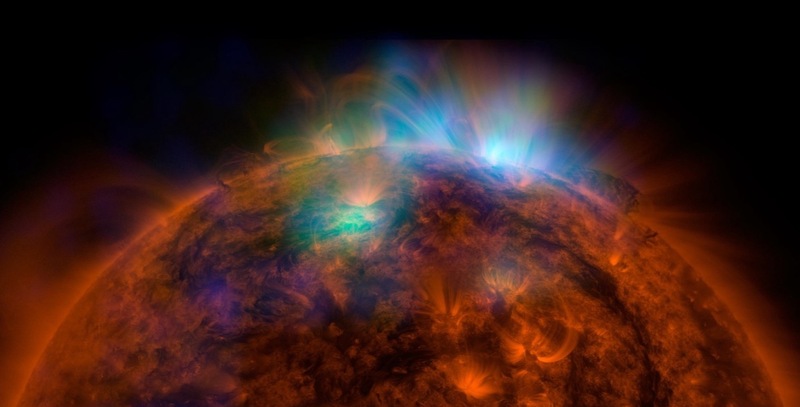Particle Physics in Space: In Search of the Elusive Axion
October 31st, 2025
NuSTAR Investigators Span the Country
September 29th, 2025
The Explosion's Aftermath: Cosmic Rays from the Remnant of a Supernova
April 11th, 2025
Extreme Variability at the Edge of the Universe
January 14th, 2025
How Many Black Holes Are Hiding? NASA Study Homes in on Answer
January 13th, 2025
Fireworks at Closest Approach: Repeated X-ray Flares from a Young Binary System
September 13th, 2024
NuSTAR Reveals Black Hole Shredding A Star
August 21st, 2024
Unveiling the Secrets of our Galaxy’s Supermassive Black Hole
July 15th, 2024
First Proof that "Plunging Regions" Exist Around Black Holes
May 16th, 2024
Clumpy Doughnuts around Supermassive Black Holes
March 21st, 2024
NASA Telescopes Find New Clues About Mysterious Deep Space Signals
February 14th, 2024
NuSTAR Observes the Earliest X-rays from a Baby Supernova
January 25th, 2024
Brightest Cosmic Explosion Ever Detected Had Other Unique Features
June 8th, 2023
An X-ray Look at the Heart of Powerful Quasars
May 25th, 2023
NASA Study Helps Explain Limit-Breaking Ultra-Luminous X-Ray Sources
April 6th, 2023
NASA’s NuSTAR Telescope Reveals Hidden Light Shows on the Sun
February 9th, 2023
NASA Gets Unusually Close Glimpse of Black Hole Snacking on Star
December 20th, 2022
NuSTAR is Working with IXPE to Reveal the Shape, Orientation of Hot Matter Around Black Hole
November 7th, 2022
A Decade of NuSTAR: What Its X-Ray Vision Has Taught Us
August 3rd, 2022
Small Steps, Giant Leaps NuSTAR podcast
June 29th, 2022
Ten Years of High-Energy Universe in Focus: NuSTAR 2022
June 20th, 2022
NuSTAR Celebrates 10 Years of Operations
June 9th, 2022
May 27th, 2022
NuSTAR GO cycle-8 selection announced
April 22nd, 2022
NASA’s NuSTAR Makes Illuminating Discoveries With ‘Nuisance’ Light
March 1st, 2022
NASA Telescope Spots Highest-Energy Light Ever Detected From Jupiter
February 10th, 2022
Black holes can tell us the expansion rate of the Universe
November 10th, 2021
NuSTAR Observes the Sun with MaGIXS
September 14th, 2021
NuSTAR and XMM-Newton See Light Echo from Behind a Black Hole
August 4th, 2021
Seeing Some Cosmic X-Ray Emitters Might Be a Matter of Perspective
July 9th, 2021





























